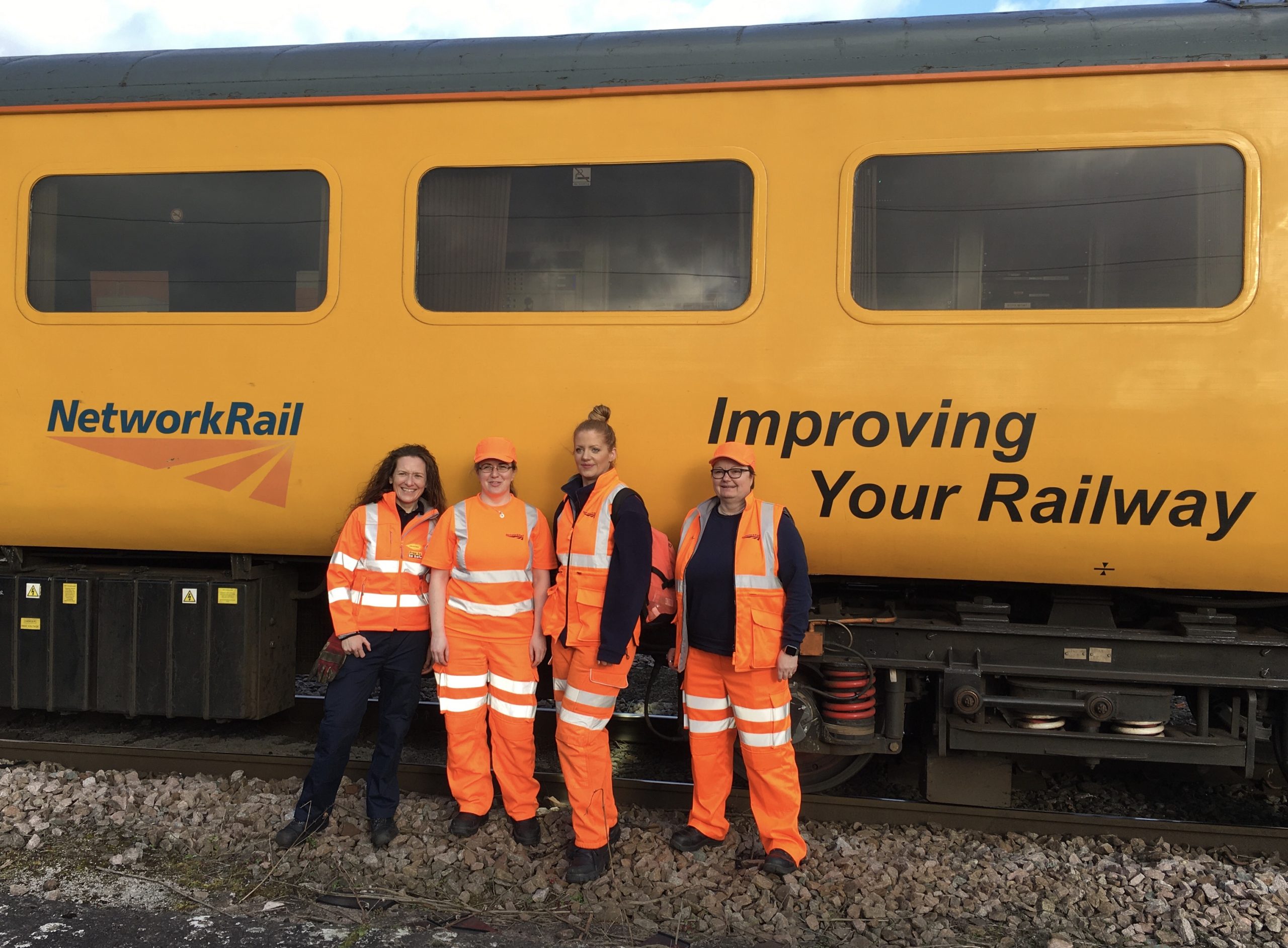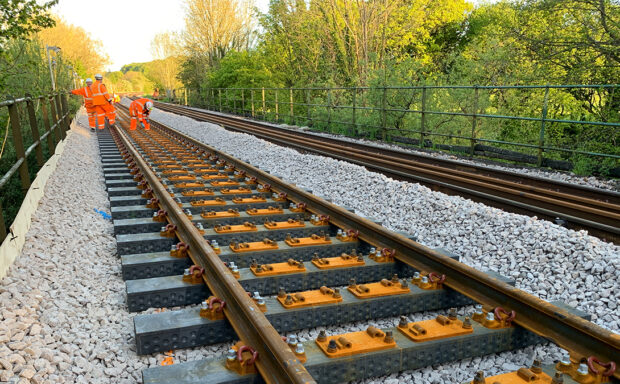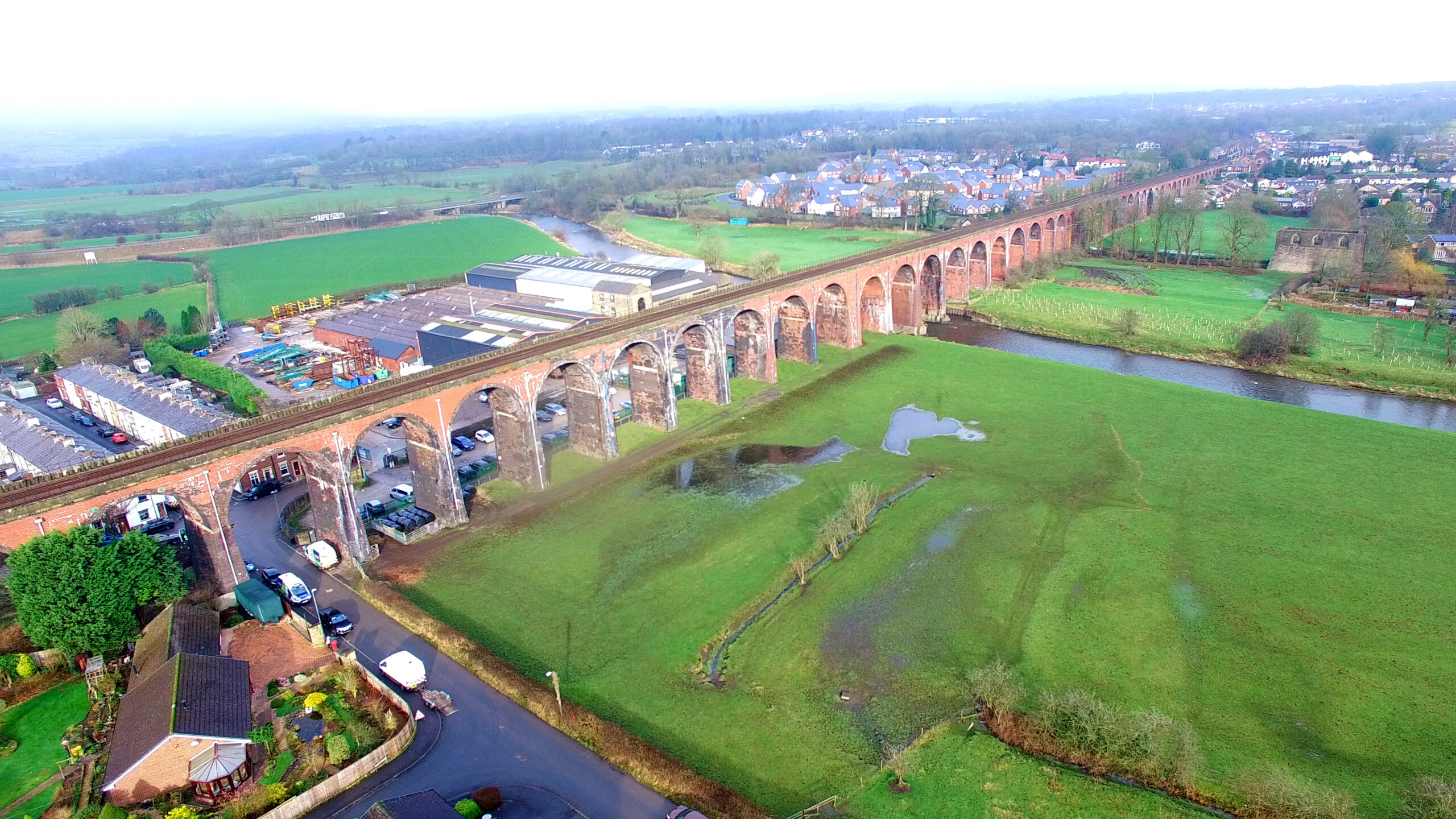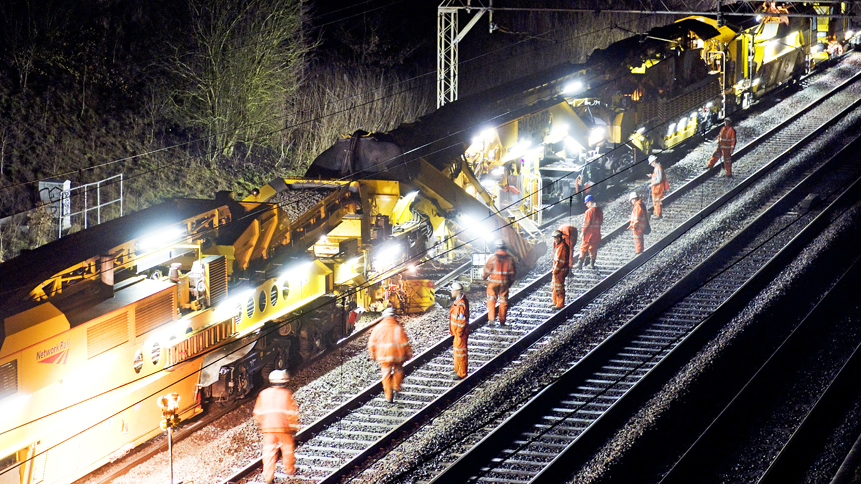Our International Women’s Day celebrations continued with a first for Network Rail – an all-female-run shift using cutting-edge track inspection technology.
On the evening of March 12, a team comprising women used Plain Line Pattern Recognition technology (PLPR), an important part of our strategy to predict and prevent faults before they occur. PLPR is state-of-the-art equipment that takes 70,000 images of track a second to give our analysts better than ever data.
Within our Asset Information Services unit, women ran a full PLPR and track geometry shift, including roles such as on-train technicians, train driver and delivery manager. A team back in the office analysed the data collected on the train, with the final information ready for use within 72 hours.
It follows International Women’s Day (March 8) events across Britain, including all-female-run passenger trains from London Victoria to Gillingham in Kent; Edinburgh Waverley to London King’s Cross and London Paddington to Bristol.
To mark International Women’s Day, Network Rail also released a flagship film encouraging all young people to discover exciting career opportunities on the railway. Watch the film, All Change, here.
Q&A with Elizabeth Hull, driver, Colas Rail UK
Why do you love your job?
I just love driving trains and the [New Measurement Train] is my favourite. I’d drive it every day if I could. It’s a [high-speed train], an intercity 125, which are now disappearing. But mainly it’s the only one in the world. It’s unique, it’s yellow, everyone knows it and I’m really proud to drive that train.
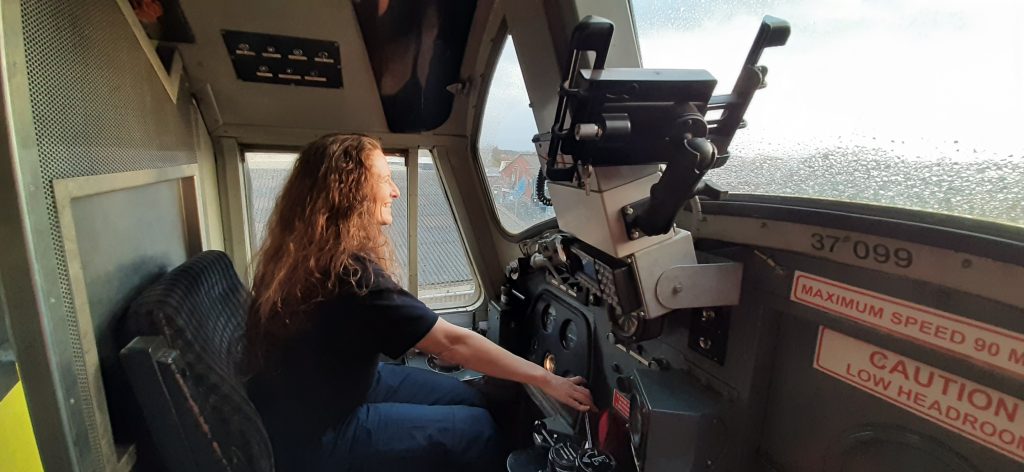
I also love getting out and seeing the scenery. You see lots of different animals, birds of prey. You see the sun come up and set. I’ve driven in snow. There’s always something different and you learn all the time.
What would you tell a young person who’s interested in the railway?
It’s a good industry to get into and there are a lot of options in the railway. If you tried train driving and didn’t like it there are lots of other options you can do. I don’t know anyone who doesn’t love working for the railway and I wouldn’t swap it for anything else.
Who are your role models?
I always love when you see women who do something different and they’ve proved that you can do it. There’s a motorcyclist called Jodie Fieldhouse who’s about 19 and I’ve watched her race. I think she’s amazing, she’s an inspiration to me.
What has been your proudest moment of your career?
The NMT. You have to do driver handling and then once you’ve done enough you get passed out and you’re then allowed to drive it on your own. So that is my first. Second proudest is driving it at 125mph on the Midland Main Line and driving it into London St Pancras station. I felt like, yeah that’s cool!
Any memorable stories?
Once I was driving a ballast [the stones on the track bed] train and we were in a possession. I was doing 20 miles an hour and I went in an upcoming tunnel and had the cab window open. I sensed something on my shoulder, I thought it was a spider. But when I came out of the tunnel a robin had flown in the cab window and sat on my shoulder. It made me jump and then it shot across the cab. I’ll never forget that.
What is Plain Line Pattern Recognition?
PLPR substantially increases our capacity to monitor, inspect and fix track faults. It monitors and records track condition information, and can find issues such as missing fasteners, excess ballast and ineffective rail clamps.
A fleet of five monitoring trains, including the New Measurement Train (NMT) – the most technically advanced train of its type in the world – uses it.
Cameras mounted underneath the trains capture an image every 0.8mm, taking 70,000 images a second at the top speed of 125mph.
PLPR identifies potential defects and sends them to our expert inspection team in Derby. Local track section managers then receive information about confirmed defects, enabling engineers to target track maintenance more effectively.
Watch this existing film to see PLPR in action:
How much will it help the railway?
PLPR-equipped trains have replaced manual inspections on 8,500 miles of track, improving the accuracy and frequency of inspections.
With the potential to reach 15,000 miles, the aim is to increase these live inspections – a target has been supported by the opening of a second PLPR facility in Derby in January 2019.
Over Control Period 6 (our next budget and planning period, which will run from 2019 to 2024), PLPR will cover almost one million (975,000) miles of railway track across Britain.
Why is it important?
As well as benefiting passengers, PLPR provides a safer method of track inspection by reducing unnecessary track visits and helping to get boots off the ballast.
PLPR also represents an efficient use of public money, having saved the taxpayer an estimated £2.2m so far, with further savings anticipated over CP6 and beyond.
Read more:
Film: International Women’s Day – All Change
International Women’s Day: Q&A with Rhian Lane, geotech engineer
IWD: Q&A with Michelle Chrabalowski, environment specialist
IWD: Q&A with Kathryn Bishop – virtual reality
IWD: Q&A with Rhian Lane, geotech engineer
International Women in Engineering Day: Just Like Me
International Day of Women and Girls in Science
How cutting-edge track technology is reducing delays for passengers
